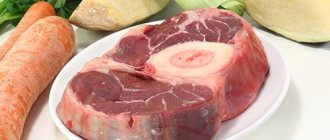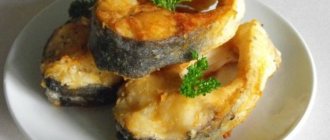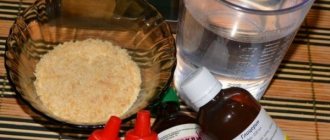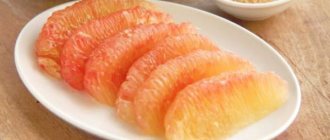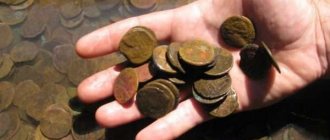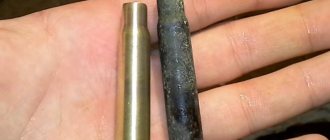So as not to spoil the skin
Many connoisseurs of burbot dishes are of the opinion that the most “tsimus” lies precisely in its elastic skin. The method of cleaning this fish without interfering with its skin is suitable for them. First you need to make cuts in the head area, grab the gills, open and remove the insides.
The first thing that will be asked to “go out” is the rectum, and then all the other offal. Rinse the fish, remove dirt and start cooking it. Cut off the head for fish soup, breaking the bone, the rest can be cut into medium pieces and fried. The problem of how to clean burbot in an easy way without removing the skin has been solved. The fish is quite slippery, so professionals recommend wearing gloves when cutting.
Peculiarities
Having decided to get acquainted with this fish, first of all you need to understand what burbot looks like. This is a large (up to 18 kg) predatory fish with a long flexible body and a mouth full of small sharp teeth. The scales are small, tightly adjacent to the body and covered with a layer of mucus, which makes cleaning difficult. The fins are soft, without spines. A distinctive feature is a pair of mustaches on the upper jaw and one short one on the lower jaw .
The meat of this fish is a real storehouse of beneficial properties. In addition to the fact that it is a dietary product, it contains a large amount of protein, amino acids, fat-soluble vitamins and valuable microelements, such as iodine, zinc, copper, manganese, etc. Burbot liver is not inferior in taste or usefulness to cod liver, thanks to which is greatly appreciated among fans.
How to remove mucus
Before getting to the scales or skin, you have to rid the carcass of copious mucus. To do this, you can pour boiling water over the fish. The slippery mass will curl up and can be easily removed with a knife along with the scales. The second well-known trick is to remove mucus with salt. Dip the carcass in it and wash it off after a few minutes, helping with a knife. Then dry it and you can start gutting and cutting.
Removing fish entrails
Gutting is a very important and responsible stage in fish cutting. For example, unsuccessful removal of the gallbladder can spoil the taste of meat, so the entrails must be removed as carefully as possible.
Removing the entrails
- Prepare a sharp knife with a thin blade.
- Place the washed fish on a stable surface.
- Make a cut near the tail section.
- Using the tip of a knife, carefully lift the skin along with the scales to form a pocket.
- Slowly moving towards the head of the fish, expand the pocket, carefully cutting the skin inside with a knife.
Fish meat contains a lot of useful vitamins and minerals. Therefore, fish should be present in the diet of not only adults, but also children. The noble taste of fish meat can amaze even the most picky gourmets.
Cutting up burbot
Cutting burbot differs little from cutting other types of fish. You just need to imagine the end result: whether a whole carcass, fillet or portioned pieces are needed for further processing. Depending on this, it will be more convenient to cut in different ways.
- Cutting fish starts from the head. It must be cut off with a sharp knife and, if you plan to prepare some kind of dish from it in the future, preserve it by removing the gills.
- Using a knife, you need to cut off the tail and fins, dorsal and ventral. This can also be done with scissors, but you need to keep in mind that they do not completely remove the fins.
- After this, the washed fish carcass can either be cooked whole or cut into portions.
You can make fillets from fish cleaned in this way, but it is much more convenient to do this if you clean the burbot in a different way.
Preparation
To cut fish you will need: coarse table salt, a knife, kitchen scissors, a cutting board, tweezers, pliers, paper. It is not necessary to buy special tools for removing the skin; you can use a sharp knife.
To cut the carcass, take a glass board. It is better washed off from particles of meat and smell. The pliers will help hold the skin while removing. You can wash off the mucus with coarse salt by rubbing the carcass with it.
Advantages and disadvantages of fish cutting devices
Every housewife should find a convenient fish processing tool for herself. Let's look at the pros and cons of different devices.
- A knife is ideal for cutting. You need to choose a quality tool that fits comfortably in your hand.
- The downside is that scales with mucus stick to the edge of the knife, which are difficult to get rid of.
- Pliers – convenient for picking up the skin. The downside is that it takes time to adapt to them.
- Hooks and clamps are designed for cleaning fish, but they can be awkward to use for beginners.
- Tweezers - can successfully remove the skin, but often slips out of your hands.
- Scissors - help cut off the tail and fins.
What is edible in burbot giblets?
Milk and caviar are used for food - fried or salted. But the liver is considered a delicacy, since it is almost identical in composition to cod liver.
At the same time, the calorie content is 613 kcal, while the cod organ contains 420 kcal.
Note! Experienced fishermen beat fresh burbot with a stick, because it is believed that then the liver increases in size and becomes tastier.
You can prepare it in different ways. The simplest recipe is the Yakut one: the pieces are rolled in flour, quickly fried in a frying pan, then seasoned with salt and pepper. In addition, a pate is made from the liver, to which mushrooms, herbs, nutmeg and salt are added. It is also stewed with vegetables and canned.
In general, when cutting burbot at home, there is little waste, since both the pulp and internal organs are used for food.
Burbot cutlets
Before preparing this most delicate dish according to a fisherman’s recipe, you need to know how to clean and cook burbot. Be sure to remove the skin.
Ingredients:
- Burbot.
- Lard - 200 g.
- White bread - 200 g.
- A glass of milk.
- Two eggs.
- A couple of bulbs.
- A clove of garlic.
- Salt and pepper.
- Flour for frying.
Cooking process:
- Soak slices of white bread in milk. Peel the onion.
- Cut up the burbot. How to clean burbot is described in the recommendations for cutting fish for consumption without skin. Place liver and caviar on a separate plate.
- Grind the burbot fillet through a meat grinder along with onions, chopped lard and swollen bread crumbs.
- Season the resulting minced meat with salt and pepper and mix with your hands.
- Beat in two eggs and continue kneading the fish mass.
- Grate or pass the garlic through a press into the minced meat and stir again.
- Place flour on a dry plate.
- Pour oil into a frying pan and heat it up.
- Form small cutlets, roll in flour and fry on both sides.
- Also roll the remaining liver with caviar in flour and fry in the same oil where the cutlets were cooked.
Serve the finished creation with sauerkraut.
How to clean frozen burbot
Experienced fishermen cut the fish with a hacksaw and clean each piece separately.
Important. When doing this, you should be as careful as possible not to damage the gall bladder, since its contents can make the meat bitter and unsuitable for use.
If you don’t want to take risks, then place the fish under running cold water and as soon as the scales thaw, scrape them off with a knife, then leave the fish in water or at room temperature until completely thawed. Then they clean it like a fresh one.
Rich ear
Experienced fishermen share the secret of preparing a delicious fish soup from a large five-kilogram burbot - freshwater cod. This fish is famous for its large liver, which is also used as a delicacy. First you need to prepare potatoes, two carrots, three onions and cut up the catch. Each fisherman offers his own advice on how to clean burbot. It can be divided as follows:
- Defrost the fish.
- First you need to separate the head and tail.
- Next, cut the skin along the entire burbot and use pliers to tear it off. Set the skin aside; it will be useful for the broth.
- Separate the carcass with the ridge from the entrails, remove the gall bladder from the liver.
- Remove meat from bones and place in a separate bowl.
The process of cooking fish soup:
- Throw the skin, head, ridge and tail into a large saucepan with thick walls, add cold water and cook over low heat for 20-40 minutes. At the moment of boiling, add coarsely chopped carrots and onions into the broth.
- Wash the meat and liver and cut into portions.
- Strain the finished broth, throw away all waste and vegetables or give it to your pets.
- Pour the strained broth into a clean saucepan and heat.
- Add the chopped third onion, carrot slices and potato cubes. Season the ingredients with coarse salt and bring to a boil.
Add chopped fillet and liver to the boiling broth. Add a little bay leaf and pepper. Cook for another 20 minutes over low heat. At the end of cooking, you can add herbs if desired.
How to skin a stocking
You can remove the skin using pliers:
- first you need to cut out the fins and make a circular cut in the skin near the head;
- then use a knife to separate the skin from the flesh of the body so that you can pick it up with pliers;
- remove in one motion.
If the head on the carcass is not needed, it will be removed immediately. If you plan to beautifully serve a dish where the burbot will be with its head (for example, stuffed and baked whole), then the gills should be removed from it and carefully scraped with a knife. After this, the carcasses begin to be gutted.
Note! The skin is removed from large specimens with a stocking; small fish are not suitable for this purpose.
You can also gut the fish first, and then:
- separate the head;
- cut the carcass lengthwise into two halves;
- Rinse;
- remove the bones;
- Remove the skin using the same pliers.
Thus, the finished fillet is obtained.
Burbot pulp has a delicate texture and a pleasant, sweetish taste. Cooked in the oven with milk or cream, it is simply incomparable.
Cooking methods
Almost everyone who has ever tried fish dishes has no doubt about the taste of burbot. But, as with any other product, a lot depends on how you prepare it. In this regard, this type of fish is universal: it is fried, boiled, stewed and smoked. Here are some tasty and healthy cooking options:
.
This is a tasty and easy to prepare fish, from which you can prepare both a simple everyday lunch or dinner, and some amazing dish for guests. The possibilities are limited only by the imagination of the cook; burbot is perfect for any recipe.
Skin removal
The skin of burbot is hard, tough and not suitable for food, even if the scales are removed from it. Therefore, it must be removed, which can be done with pliers or similar tools. Without them, skinning will be quite problematic
- First of all, it is necessary to clean the carcass of mucus - this will simplify the cleaning task, since the fish will slip out of your hands less. To do this, you need to thoroughly rub it with coarse salt and then rinse well.
- After this, use a sharp knife to cut the skin around the head. They cut the burbot skin behind the gill slits.
- Now comes the most difficult part: you need to firmly grasp the fish and, picking up the edge of the skin with pliers, gently pull it down so that it takes on the appearance of a “stocking.” Usually the skin of burbot is dense and strong, so it can be easily removed.
Method No. 1
The first method involves cleaning, starting with removing the skin. To do this, fingers are inserted under the gills towards the back, tearing off the skin at the border of the body and head. The latter remains in its place. Moving towards the tail, pull it down, grabbing the gills with your other hand. To prevent the skins from slipping out of your hands, use thick paper or kitchen tweezers. They will securely fix the skin tissue. To prevent the fish from staining the table area, use newspapers or napkins.
Next, you need to carefully cut the burbot carcass with a knife, without inserting it too deeply. When freeing the internal organs out, be sure to cut the liver from the base of the head and do not pull the intestines hard or harshly. Otherwise, all the insides will leak out and ruin the carcass. Also remove the inner film by prying it off with the tip of a knife. Afterwards, rinse the fish with running water.
OK it's all over Now. Now you can begin the further process of preparing the intended dish.
Cutting up burbot
There is nothing complicated in this processing of fish - first the head is removed, then the tail and fins, if they have not been removed earlier. Cut into portions.
How to fillet burbot
To do this, make an incision in the direction from the head to the tail so that the knife, resting against the ribs, runs parallel to the ridge. In the process of obtaining the fillet, the ribs are carefully released.
On a note! There are no small bones in the burbot pulp, so it separates quite easily.
The resulting fillet is cut off at the tail, if it has not been removed earlier, and the procedure is repeated with the second fillet, turning the carcass over to the other side.
Brief description of the fish
Burbot is the only freshwater representative of the cod family. In appearance it somewhat resembles a catfish or snakehead. His body is covered with a layer of mucus. Very small scales fit tightly to the skin, which is why many people believe that this fish has no scales at all. The color varies depending on the habitat - from light yellow to dark, almost brown.
The head is flattened, somewhat reminiscent of a snake. There is one whisker under the lower jaw. Burbot is a predatory fish. It has many small sharp teeth in its mouth, similar to catfish. It can reach impressive sizes and weigh up to 24 kilograms. Although such specimens are found only in northern reservoirs. In the middle zone, individuals weighing up to 2-4 kg are usually caught.
This fish can live and develop normally only at low water temperatures. Therefore, burbot is active, starting from the onset of stable cold spells in the fall and until the spring ice drift. The warmer the water, the less active it is. At temperatures above 15 degrees, burbot goes into deep holes next to springs and falls into torpor for the entire summer - until the water becomes cold again. Because of this feature, legends arose that this predator disappears somewhere from water bodies during the summer.
Burbot has white, dense and at the same time tender, fatty, slightly sweet and pleasant-tasting meat. There are no small bones in it. In addition, the large liver of this fish is not inferior in taste to cod liver.
